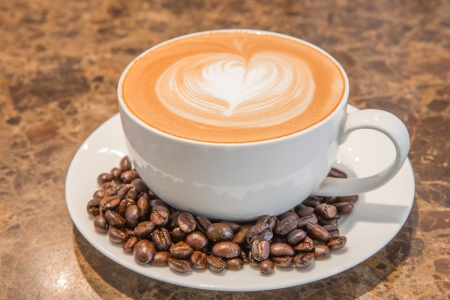1. The Birth of Coffee in Europe
Long before espresso machines and bustling Italian cafés, coffee made its first journey into Europe through ancient trade routes. Originating from Ethiopia and later cultivated in Yemen, coffee spread across the Middle East and North Africa before making its way into European ports during the late 16th century. Venetian merchants were among the first Europeans to bring coffee beans back from their travels, introducing the new beverage to Italy.
At first, coffee was met with curiosity—and even suspicion. Some people called it the “bitter invention of Satan,” while others saw it as a health tonic or exotic luxury. However, thanks to increasing trade with the Ottoman Empire and growing interest in Eastern cultures, coffee began gaining popularity among Europes elite and intellectuals.
How Coffee Traveled to Europe
| Region | Role in Coffees Journey |
|---|---|
| Ethiopia | The birthplace of wild coffee plants; where the story begins. |
| Yemen | Coffee cultivation and trade started here; exported via port of Mocha. |
| Ottoman Empire | Main hub for spreading coffee culture across the Middle East and into Europe. |
| Venice, Italy | One of the first European cities to import and sell coffee in public spaces. |
The Rise of Coffeehouses in Italy
By the early 17th century, Venice saw its first official coffeehouse open—places known as “botteghe del caffè.” These spots quickly became popular hangouts for artists, writers, and thinkers. Unlike taverns that served alcohol, these coffeehouses offered a more refined atmosphere for conversation and debate.
A Unique Italian Twist
While other European countries like France and England also embraced coffee, Italy took a distinctive path. Italians began focusing on quality, flavor, and presentation. The drink was no longer just about caffeine—it became part of daily life, rituals, and even social identity. This laid the foundation for what would eventually evolve into Italy’s signature espresso culture in centuries to come.
2. The Rise of the Italian Café Culture
As coffee made its way into Italy in the 16th century, it didn’t take long for it to become more than just a drink—it became a lifestyle. By the 17th and 18th centuries, coffee houses began popping up across major Italian cities like Venice, Rome, Milan, and Florence. These cafés quickly evolved into vibrant social hubs where people from all walks of life gathered to exchange ideas, discuss politics, and enjoy art and music.
The Birthplace of Italian Coffee Houses
Venice is often credited as one of the first Italian cities to embrace coffee culture. Thanks to its busy trade routes with the East, Venice was among the earliest European cities to import coffee beans. In 1720, Caffè Florian opened its doors in St. Mark’s Square—and its still serving espresso today. This café set the tone for many others that followed, offering an elegant space for conversation and creativity.
Cafés as Cultural and Political Hotspots
Italian cafés weren’t just places to sip on espresso—they were essential meeting spots where intellectuals, artists, writers, and revolutionaries gathered. In cities like Turin and Milan, cafés played a key role during the Risorgimento (the unification of Italy), providing a safe space for political discussion and planning.
How Cafés Influenced Society
| City | Notable Café | Cultural Impact |
|---|---|---|
| Venice | Caffè Florian | Hosted artists and intellectuals; symbol of elegance |
| Rome | Caffè Greco | Popular among poets, painters, and philosophers |
| Milan | Caffè Cova | Gathering place for political thinkers during unification |
| Florence | Caffè Gilli | A hub for literary minds and fashion icons alike |
The Ritual of Italian Coffee Drinking
Over time, Italians developed a unique coffee-drinking ritual that reflects their values—simplicity, quality, and community. Whether it’s a quick shot of espresso at the bar or a leisurely cappuccino enjoyed with friends, coffee is deeply woven into daily life. The café became not only a place to fuel up but also a space to slow down and connect.
Fun Fact:
In Italy, ordering a cappuccino after 11 AM might earn you strange looks—many Italians believe milk-heavy drinks are only for breakfast!
This rise of café culture not only shaped how Italians drink coffee but also how they live—making each cup a moment of connection and expression.
![]()
3. Espresso: Italy’s Iconic Invention
When it comes to Italian coffee, nothing is more iconic than the espresso. This small but mighty cup of concentrated coffee has become the heart and soul of Italys fast-paced coffee culture. But how did this beloved beverage come to be? It all started in the early 20th century with the invention of the espresso machine.
The Birth of the Espresso Machine
In 1901, Luigi Bezzera, a Milanese inventor, patented the first espresso machine. His goal was simple: to brew coffee faster. Traditional brewing methods took several minutes per cup, but Bezzera’s steam-powered machine could produce a single shot in under 30 seconds. This was a game changer for busy Italians who wanted their caffeine fix quickly without sacrificing flavor.
Early Innovations in Espresso Machines
| Year | Inventor | Key Feature |
|---|---|---|
| 1901 | Luigi Bezzera | First steam-driven espresso machine |
| 1938 | Achille Gaggia | Introduced pressure-based extraction for crema |
| 1960s | Various Manufacturers | Widespread use of electric pumps and improved consistency |
Transforming Italian Coffee Culture
The espresso machine didn’t just make coffee quicker—it changed how Italians experienced it. Suddenly, cafés became places for quick stops instead of long stays. The “al banco” (at the bar) culture emerged, where customers would stand at the counter, order an espresso, drink it in one or two sips, and move on with their day. This fast, efficient style mirrored Italy’s urban lifestyle and helped espresso become a national staple.
Espresso as a Cultural Symbol
Over time, espresso evolved from a convenience into a symbol of Italian identity. It represents quality, tradition, and pride. Whether its enjoyed during a morning commute or after lunch with friends, espresso is more than just a drink—it’s a ritual that connects people across generations.
Why Espresso Matters in Italy
- Speed: Perfect for busy lifestyles
- Taste: Rich flavor with crema on top
- Cultural Tradition: A daily habit shared by millions
- Social Connection: Often enjoyed with others at local bars
The invention of the espresso machine didn’t just revolutionize how coffee was made—it helped shape modern Italian life. It turned drinking coffee into an art form and gave birth to habits that remain deeply rooted in Italian culture today.
4. Regional Coffee Traditions Across Italy
Italy’s coffee culture is as diverse as its landscapes, with each region boasting its own unique preferences and brewing techniques. From the Alpine north to the sun-drenched south, Italians have developed distinct ways of enjoying their daily cup. Let’s take a journey through some of these regional coffee traditions.
North Italy: Strong and Smooth
In northern cities like Milan and Turin, coffee tends to be strong but smooth, often enjoyed quickly at the bar while standing. Espresso dominates here, and locals appreciate a well-balanced shot with a rich crema. Cappuccino is also popular in the mornings—always before 11 a.m.—paired with a croissant or brioche.
Coffee Preferences in the North:
| City/Region | Preferred Drink | Typical Brewing Style |
|---|---|---|
| Milan | Espresso | Quick pull with thick crema |
| Turin | Bicerin (coffee, chocolate, cream) | Layered in a glass without mixing |
Central Italy: Balanced and Traditional
In cities like Florence and Rome, coffee culture balances tradition with local flair. Romans enjoy a slightly more intense espresso, often consumed multiple times a day. Macchiato—espresso “stained” with milk—is also common for those who want something between an espresso and a cappuccino.
Coffee Preferences in Central Regions:
| City/Region | Preferred Drink | Typical Brewing Style |
|---|---|---|
| Florence | Caffè Lungo (longer espresso) | Pulled with more water for a milder taste |
| Rome | Caffè Macchiato | Espresso topped with a dash of steamed milk |
Southern Italy: Bold and Sweet
The further south you go, the bolder the coffee becomes. In Naples and Sicily, coffee is dark, robust, and often served sweetened. Neapolitans are proud of their caffè napoletano, brewed using a special flip-style pot called the “cuccumella.” Sicilians may even enjoy granita di caffè—frozen coffee slush—with whipped cream on hot summer days.
Coffee Preferences in the South:
| City/Region | Preferred Drink | Typical Brewing Style |
|---|---|---|
| Naples | Caffè Napoletano | Brewed slowly with cuccumella; strong and sweetened |
| Sicily | Caffè con Granita | Iced coffee slush topped with whipped cream |
A Taste of Local Identity in Every Cup
No matter where you are in Italy, coffee is more than just a drink—its part of daily life and local identity. Whether you’re sipping an espresso at a Milanese café or enjoying sweetened coffee on a Sicilian terrace, each region offers a unique flavor experience that reflects its people and traditions.
5. Italian Coffees Global Influence
Italian coffee culture has left a lasting mark on how the world enjoys coffee today. From espresso machines in American cafés to latte art competitions in Asia, the influence of Italys rich coffee traditions is everywhere. Lets take a look at how this cultural treasure spread far beyond its borders and became part of everyday life around the globe.
The Rise of Espresso Worldwide
Espresso was born in Italy in the early 20th century, and it quickly became the heart of Italian coffee culture. Unlike drip or percolated coffee, espresso offered a bold flavor and a quick preparation time, which perfectly suited the fast-paced lifestyle of modern cities. When Italian immigrants moved to other countries, they brought their love for espresso with them—especially to places like the United States, Australia, and South America.
Espresso’s Impact Around the World
| Region | Espresso Influence |
|---|---|
| United States | The rise of specialty coffee shops and café chains modeled after Italian espresso bars. |
| Australia | A strong “flat white” culture developed from espresso-based drinks. |
| Japan | Cafés serve artisanal espresso drinks with a focus on aesthetics and quality. |
| Brazil | A blend of local beans with Italian-style espresso preparation methods. |
Café Chains Inspired by Italy
Many global coffee chains have drawn inspiration from Italian café culture. Starbucks, for example, was heavily influenced by founder Howard Schultz’s trip to Milan in the 1980s. He was inspired by the lively ambiance of Italian espresso bars where people gathered not just for coffee, but also for conversation and community. Today, that idea lives on in thousands of cafés worldwide that aim to capture that same welcoming atmosphere.
Main Features Borrowed from Italian Cafés
- The Espresso Bar: A quick-service counter where customers enjoy their shot standing up.
- Coffee as a Social Ritual: Meeting friends or taking breaks over an espresso or cappuccino.
- Simplified Menu: Focus on classic drinks like cappuccino, macchiato, and caffè latte.
- Coffee Presentation: Emphasis on crema, proper cup size, and temperature.
A Lasting Legacy
The way we drink coffee today owes much to Italy’s innovations and traditions. Whether its sipping an Americano at a local café or enjoying a cappuccino at brunch, traces of Italian coffee heritage are all around us. This global influence continues to evolve, but it always circles back to the timeless charm of Italy’s original coffee culture.


